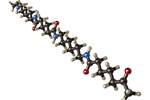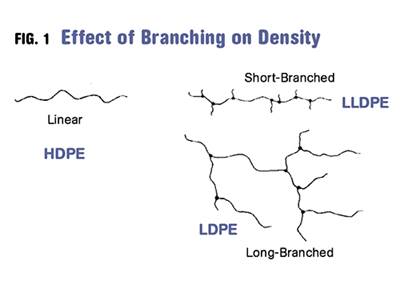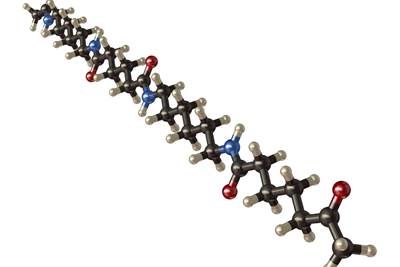Polymer Science for Those Who Work With Plastics: Molecular Weight — What It Is and Why It Matters
Molecular weight might seem like an abstract concept, but it plays a crucial role in determining the behavior of plastics during processing and in their final applications.
In my previous article, I dove into the foundation of plastic materials: the polymer repeat unit. I explained how many bulk properties of plastics are understood by examining the molecular structure of the repeat unit. Here is the main takeaway: By understanding a few fundamental molecular concepts, we can better explain and predict the bulk behavior of plastic materials.
In this two-part series on molecular weight, I’ll expand on that foundation. This article lays the groundwork by explaining what molecular weight is; how it’s calculated; and why it’s so important. In the next article, we’ll dive deeper into how molecular weight affects the performance and processing of plastics.
Most people working with plastic materials have heard of molecular weight, but if asked to explain what it is — or how it influences processing, toughness or other properties — they might get a little uncomfortable or change the subject. Let’s unravel the complexities of molecular weight and make it accessible for everyone.
What Is Molecular Weight?
The idea of weighing things is something with which we’re all familiar. Whether we like it or not, we’re reminded of this during annual checkups when the doctor asks us to step on the scale. Similarly, the concept of weighing a polymer molecule isn’t hard to grasp. Because we can’t place a single polymer molecule on a scale, we calculate its molecular weight by summing up the weights of all its constituent atoms.
Here’s a simple example: Consider a single polyethylene (PE) molecule made up of 500 repeat units. If you need a refresher on what a repeat unit is, I covered this concept in my previous article in the October 2024 issue of Plastics Technology. In short, a repeat unit is the smallest building block of a polymer chain, repeating over and over to create the entire polymer molecule. For PE, the repeat unit consists of two carbon atoms and four hydrogen atoms. With 500 repeat units, this molecule contains 1,000 carbon atoms and 2,002 hydrogen atoms (the extra two hydrogens cap the ends of the polymer chain), see Figure 1.

Figure 1: Repeat unit of polyethylene.
Because each carbon atom weighs about 12 atomic mass units (amu) and each hydrogen atom weighs about 1 amu, the molecular weight of this polyethylene molecule is about:
(1,000 × 12 amu) + (2,002 × 1 amu) = 14,002 amu
This calculation is straightforward. However, there are two important considerations that make polymer molecular weight a bit more complex.
Number Average vs. Weight Average
First, plastic materials (also known as polymeric materials) are never made up of just a single molecule. Instead, they are a collection of molecules of different sizes, forming a range — or distribution — of molecular weights (see Figure 2). Some molecules are short (low molecular weight), while others are long (high molecular weight). Think of this like necklaces: some are short and delicate, sitting snugly around the neck, while others are long and heavy, draping loosely. This variety in molecular size is a key feature of polymeric materials.

Figure 2: Polymer molecules have a distribution of molecular weights.
Second, because polymer molecules vary in size (for example, they have a distribution), we report the molecular weight of polymers as an average value. However, not all averages are calculated the same way. Two commonly used methods for calculating molecular weight averages are:
- Number Average Molecular Weight (Mn): This is the average based on the total number of polymer molecules in the sample.
- Weight Average Molecular Weight (Mw): This average gives more weight to larger molecules, as it takes molecular weight into account during the calculation.
Figure 2 illustrates Mn and Mw. Notice how Mw is bigger than Mw. This might all feel like nonsense right now, but bear with me for just a bit more. To do that, let’s turn to a grocery store analogy inspired by my former colleague, Professor Dr. Gary Smith.
Imagine you go to the grocery store and buy the following:

If we calculate the number average weight (Mn), we divide the total weight of all the fruit by the total number of fruit:
However, the weight average (Mw) emphasizes the heavier items (watermelons in this case) and is calculated differently.
For this example, Mw comes out to approximately 10,900 g.
This analogy illustrates why Mw is always higher than Mn: Larger items (or longer polymer chains) have a greater influence on the weight average. For polymers, Mn is primarily influenced by the total number of chains, while Mw is weighted more heavily by the length (molecular weight) of each chain.
Polydispersity Index: What It Tells Us
Hang with me for just one more moment. One useful way to describe the distribution of molecular weights in a polymer is the polydispersity index (PDI), which is simply the ratio of Mw to Mn:

The PDI gives us insight into the spread of molecular weights in the sample. A lower PDI means the polymer chains are more uniform in size, while a higher PDI indicates a wider distribution.
Why Does Molecular Weight Matter?
Before we wrap up, let’s preview why molecular weight is so important in the world of plastics. Molecular weight and its distribution directly influence key material properties:
Processing: Have you ever worked with a polymer that was too viscous or had a melt flow index (MFI) that was too low? High molecular weight often improves mechanical properties, but it also increases viscosity, making the material harder to process. To address this, manufacturers may add lower molecular weight polymers to improve flow, which increases the MFI and broadens the polydispersity index (PDI).
Mechanical Properties: A polymer with very low molecular weight might be too brittle, snapping instead of bending. Increasing molecular weight improves ductility and impact resistance, as longer chains form more entanglements and connect regions of the plastic. However, this improvement in toughness comes with a cost: higher viscosity, which can complicate processing. To strike a balance, engineers often blend high- and low-molecular weight polymers to optimize both mechanical performance and processability.
These trade-offs underscore the importance of understanding molecular weight when working with plastic materials.
Molecular weight might seem like an abstract concept, but it plays a crucial role in determining the behavior of plastics during processing and in their final applications. In the next article, we’ll explore specific case studies and practical applications to deepen your understanding of molecular weight and its real-world significance.
About the author: David Rhoades is a lecturer in polymer science and plastics engineering at Penn State Behrend. With a doctorate in polymer science and engineering from the University of Southern Mississippi, he helps students connect classroom learning with real-world applications in the plastics industry. Rhoades also consults and guest lectures, using his knowledge to solve practical challenges in plastics engineering. Contact: 814-898-6153; dwr131@psu.edu.
Related Content
Prices of All Five Commodity Plastics On the Way Up
Despite earlier anticipated rollover in prices for most of the volume commodity resins, prices were generally on the way up for all going into the third month of first quarter.
Read MorePart 3: The World of Molding Thermosets
Thermosets were the prevalent material in the early history of plastics, but were soon overtaken by thermoplastics in injection molding applications.
Read MoreThe Effects of Stress on Polymers
Previously we have discussed the effects of temperature and time on the long-term behavior of polymers. Now let's take a look at stress.
Read MorePrices Up for All Volume Resins
First quarter was ending up with upward pricing, primarily due to higher feedstock costs and not supply/demand fundamentals.
Read MoreRead Next
Density & Molecular Weight in Polyethylene
This so-called 'commodity' material is actually quite complex, making selecting the right type a challenge.
Read MorePolymer Science for Those Who Work With Plastic — Part 1: The Repeat Unit
What are the basic building blocks of plastics and how do they affect the processing of that material and its potential applications in the real world? Meet the repeat unit.
Read MoreA Processor’s Most Important Job, Part 1: Molecular Weight
Many processors don’t realize that preserving material characteristics is crucial to product success and failure. The focus here is on molecular weight.
Read More























